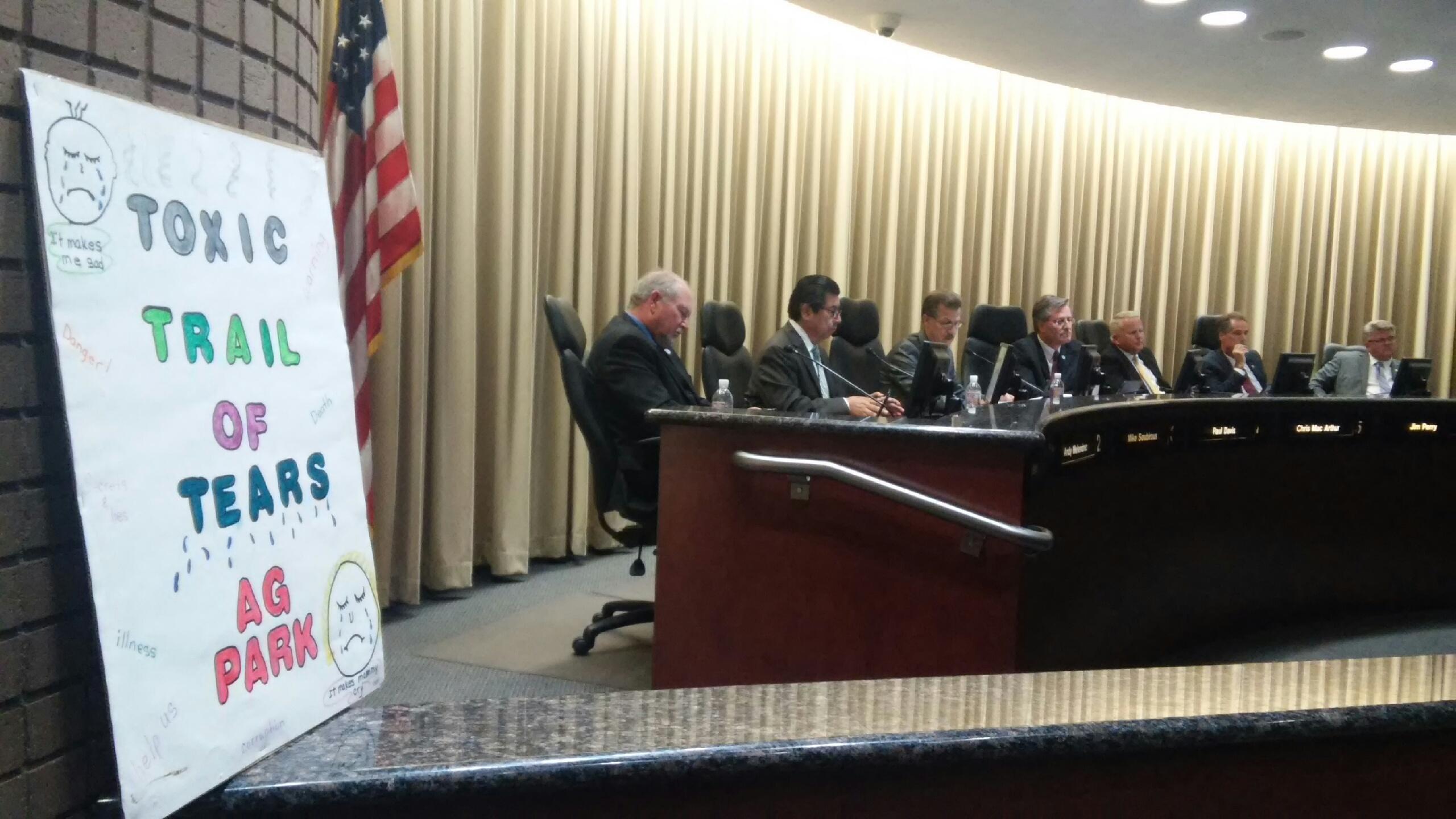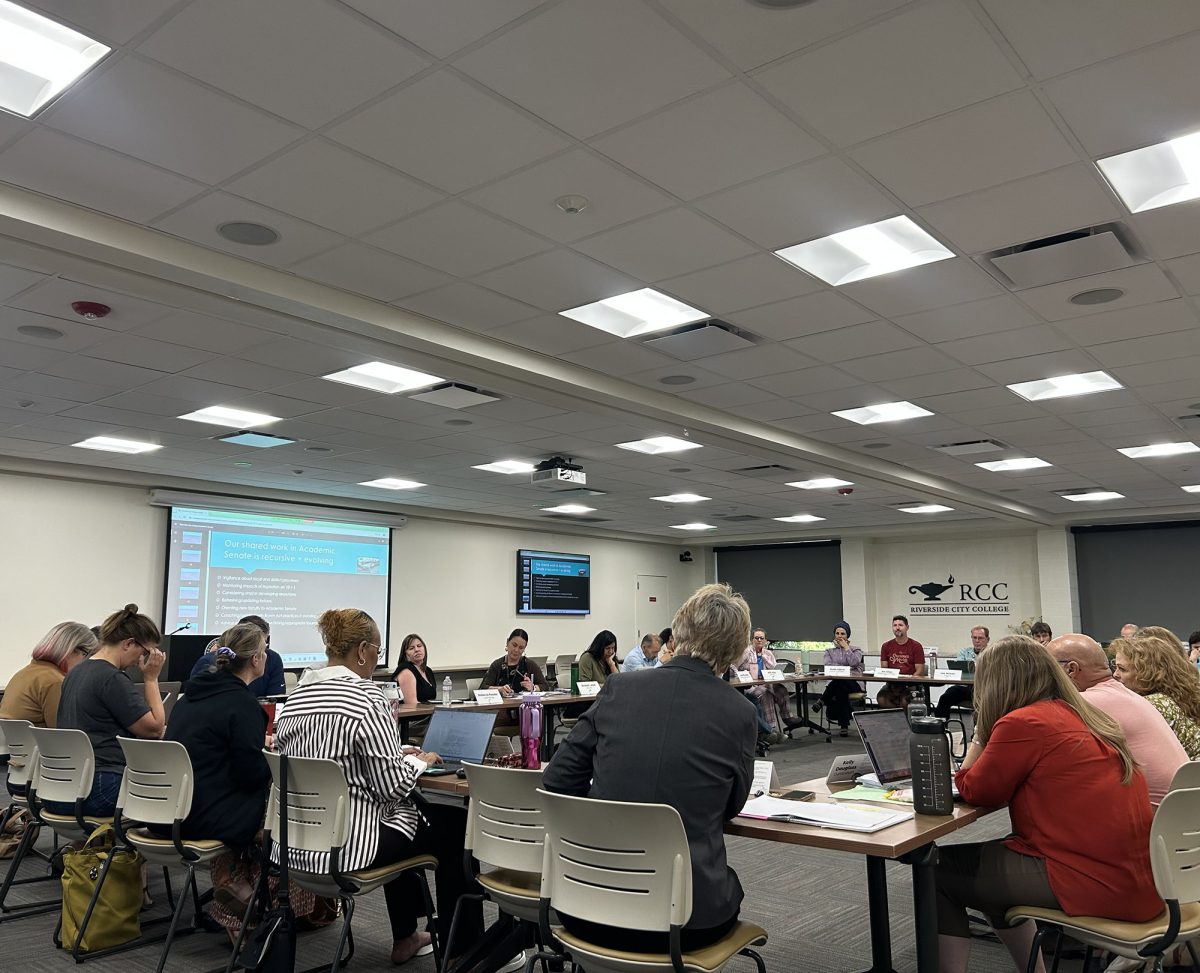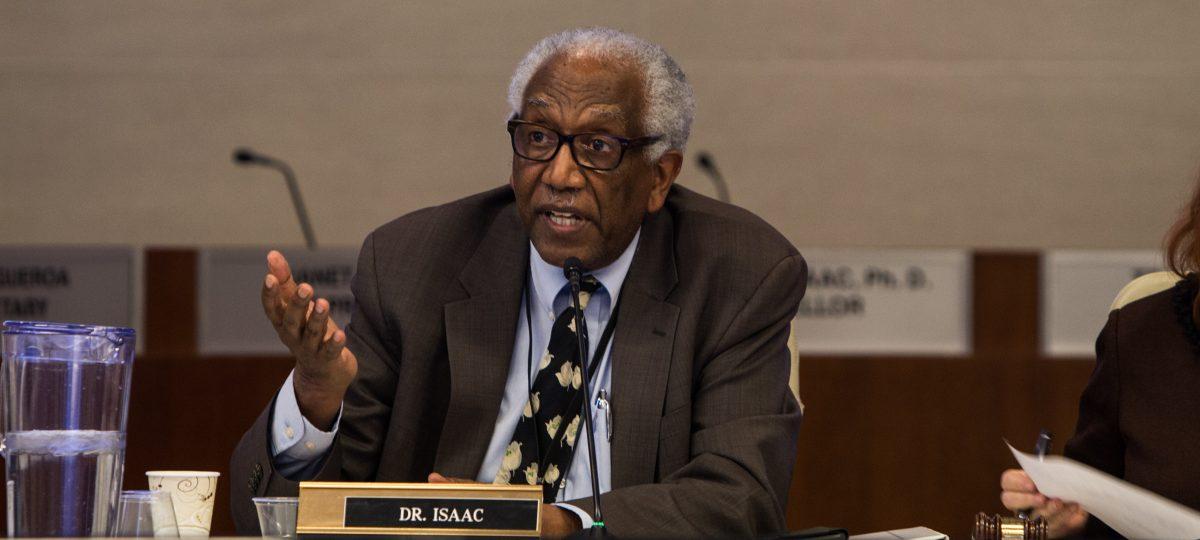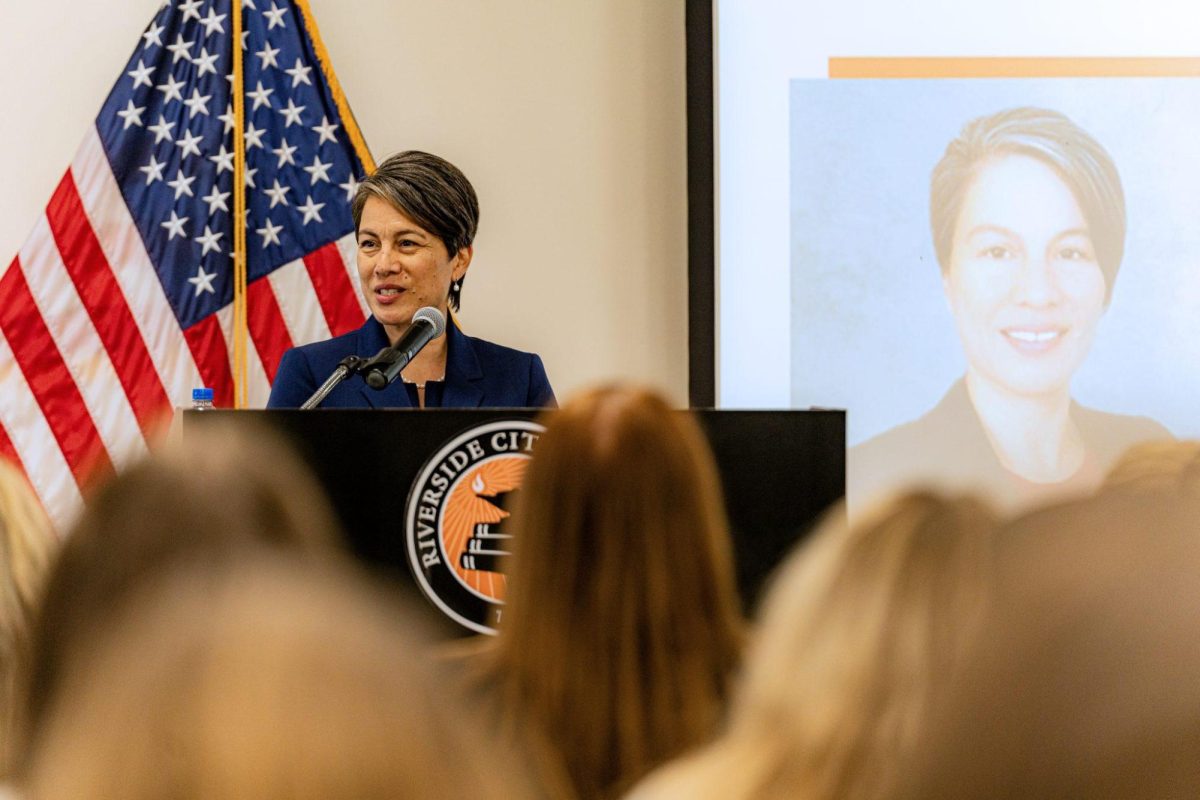Possible ground soil contamination is addressed by state and city officials, testing to continue in area
Written by Taven Strickert

Riverside City Council meets March 15, to discuss possible toxic contamination at Agricultural Park. Residents made signs of protest to the building of housing developments in the area. Barbara A. Lee, Director of the California Department of Toxic Substances Control spoke on behalf of the organization.
The Riverside City Council gathered March 15 to hear from Barbara A. Lee, director of the California Department of Toxic Substances Control, about the contamination and possibility of future construction at Riverside’s Agriculture Park.
Governor Jerry Brown appointed Lee to her position in October of 2014. Since Lee’s appointment, Riverside City Council had been seeking an audience with her to discuss the contamination at AG Park. Lee is working with the State and Federal Environmental Protection Agencies throughout the investigations.
The land was purchased by Chuck Cox, back in 2003. He was ready to break ground on his American Housing Ventures Communities Arroyo Park Homes development project when polychlorinated biphenyl (PCB) contamination was found on the site caused by a spill of over 10,000 gallons of now labeled toxins, according to Alicia Robinson of The Press Enterprise in her story on the contamination in the area.
At the City Council meeting, questions were raised as to the thoroughness of the contamination testing, the safety of the residences in the area.
“The lack of communication between your office and ours,” councilman Mike Soubirous said regarding Lee and the council’s relationship.
Since her appointment, Lee has been overseeing cleanup and testing in AG Park and expressed that prior testing and cleanup efforts had been insufficient.
“It turns out to have been an incorrect model, clearly there was another area of contamination at the site. At this time, we and the US EPA believe there was another area, probably deeper that had PCB contamination,” Lee said.
This brings up a key issue of the thoroughness of the testing as the developer plans on building homes in the area. Many have asked about the type of testing being conducted.
Lee gave details on the testing process which stated that the DTSC was only testing a foot deep into the soil. On average, a home foundation is about 4 inches to a foot deep, but as assemblyman, John Burnard, who was in attendance, would point out, many of the houses being built would have pools that would extend deeper into the soil and increase the chances of PCB contamination for both the workers and residents.
“One of the concerns the community brings forward is we are only digging down about a foot. We suspect if we dug 2 foot, 3 foot, 4 foot, we would find more issues and are there health issues associated with PCBs this far down?” said Burnard.
Lee described PCB as “sticky and non-volatile” she said.
“Unless very deep digging occurs, we wouldn’t expect them to come in contact with them” said Lee.
“The data doesn’t show significant acute risk for humans. There is limited evidence of acute toxicity at high levels of exposure through ingestion in laboratory rats, but not with non-ingestion exposure. The risks are present only when the exposure is over a long period of time and the risks are generally related to cancer,” continued Lee.
Lee made this comment amidst hissed “liar” and “I guess living in a home doesn’t count as a long period of time” from the crowded assembly hall. Many residences in there area have had pets and even loved ones die of cancer in the past few years.
“You don’t have medical doctors on your staff and I’m sure you, like us, have heard compelling stories about individuals that have gotten disease and have passed away and the loss of pets and there has been plenty of talk about cancer clusters,” Perry said. “At what point in this process do you look at the need for epidemiologists, the individual that looks at cancer clusters,”
Burnard shared interest in Soubirous’s claim on the concerns of the lack of communication and in particular, quality information. Lee referred them to the DTSC website.
“The community has concerns that the developer pays for the testing. Can DTSC verify that the testing is independent and quality testing has absolutely accurate results? To be a little rude, I guess, as the community has pointed out. The developer is paying for it, how do we know he’s not just buying the results he wants?” said Burnard which was followed by a tumult of applause.
Testing will continue in AG Park as the residences in the area await a conclusion to their health concerns. The DTSC will pursue more tests alongside those of the EPA with the goal of making the area safe for habitation in the coming years.












